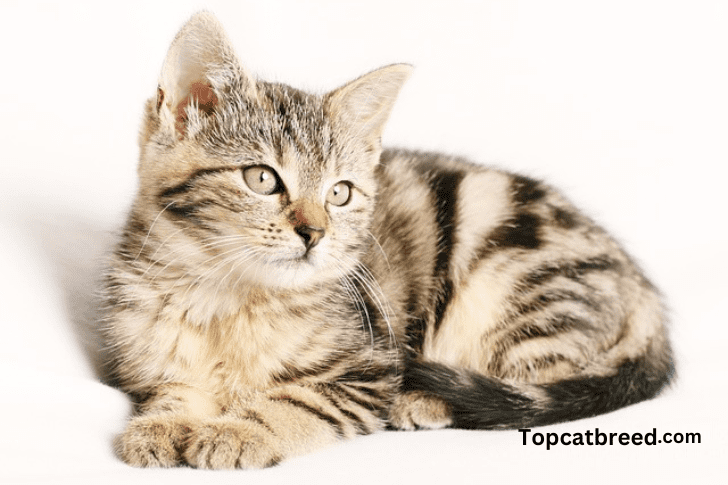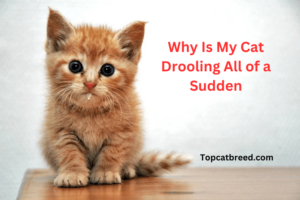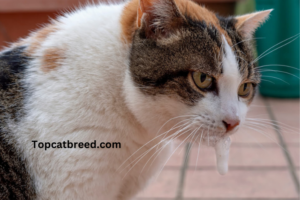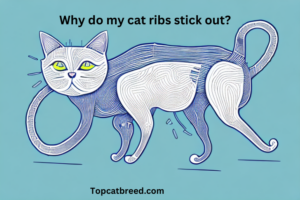Do you find yourself often wondering, “Why won’t my cat shut up?” You’re definitely not alone in this situation. Many cat owners have encountered the continuous and sometimes even unending vocalizations of their feline companions. These meows, yowls, and chirps can be charming on occasion, but they can also become quite bothersome when they persist. In this article, we’ll delve into the various reasons behind your cat’s vocal behavior in a manner that’s easy to grasp, free of complicated language, and aligning with Google’s preference for valuable content.
Cats are renowned for their distinctive communication methods, and their vocalizations are their way of expressing themselves. However, the reasons behind your cat’s never-ending meowing can vary. It might be a plea for attention, a signal of discomfort, or even an indication of a potential health issue. Grasping the underlying factors that lead your cat to vocalize excessively is crucial for addressing their needs effectively. So, if you’re inquisitive about why your beloved pet won’t cease its chattering, read on to uncover the insights you need to ensure the happiness of both you and your cat. So, why won’t my cat shut up? Let’s explore this further.
Why won’t my cat shut up?
Understanding Cat Communication
Cats are renowned for their exceptional communication skills, and meowing is at the core of how they express themselves. To foster a strong bond with your feline friend, it’s essential to comprehend their vocal language.
The Basics of Cat Vocalizations
Cats utilize a diverse array of vocal sounds to convey their emotions and needs. Understanding these vocalizations can help you better interpret what your cat is expressing.
Meows: Meowing is the primary way cats communicate with humans. The pitch, length, and intensity of meows can vary significantly, allowing cats to convey a wide range of messages.
Purring: While purring is often associated with contentment, it’s important to note that cats may purr when in pain, anxious, or seeking attention. Purring serves as a multifaceted means of communication.
Hissing and Growling
These vocalizations indicate fear, aggression, or discomfort. They serve as clear warnings for potential threats to back off, helping cats establish personal boundaries. Chirping and Chattering: Cats may produce these intriguing sounds when they observe birds or other prey animals, revealing their strong hunting instincts. It’s a fascinating glimpse into their predatory nature.
Trills and Mews: Trills and mews are often used by cats to greet their favorite humans or other cats. These gentle, melodic sounds serve as friendly and affectionate communication. Yowls: Yowling is louder and more drawn-out than meows, often indicating distress or a specific desire. Understanding the context of yowls is essential for addressing your cat’s needs effectively.
How Can You Silence A Cat?
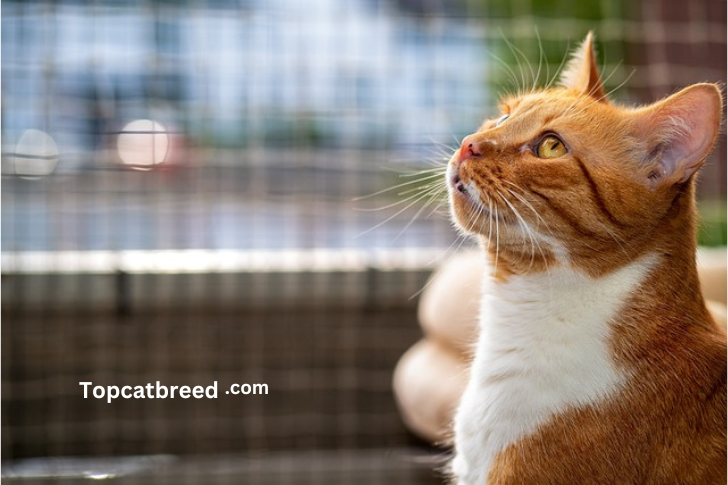
When your cat’s meowing becomes excessive and disruptive, it’s essential to address the issue with care and understanding.
Understanding Cat Communication
Before taking any steps to quiet your cat, it’s crucial to understand their vocalizations and what they might be trying to communicate. Meowing is their primary form of interaction with you.
The Meaning behind the Meow: Recognizing the various types of meows and their potential meanings can help you respond appropriately.
Why Is Your Cat Meowing So Much?
Identifying the underlying reasons for your cat’s excessive meowing is the first step to addressing the issue effectively.
Attention-Seeking Behavior: If your cat is meowing for attention, consider spending more quality time playing and interacting with them.
Hunger and Mealtime: Ensure that your cat is on a consistent feeding schedule with appropriate portion sizes.
Loneliness and Separation Anxiety: If your cat is meowing due to loneliness, consider the introduction of companionship or interactive toys.
Stress and Anxiety: Address any changes in your cat’s environment and consider calming aids or supplements when necessary. Health Concerns: Consult with your vet to rule out any underlying medical issues that might be causing discomfort and excessive meowing.
How They Say It Is Important
Cats use a wide range of vocal sounds to express themselves. Understanding their different vocalizations can help you respond effectively.
Meows: The most common form of communication with humans, meows can convey a wide range of emotions and needs.
Purring: Often associated with contentment, but cats may purr in other situations as well.
Hissing and Growling: These vocalizations indicate fear or aggression.
Chirping and Chattering: Cats may produce these sounds when observing birds or prey animals.
Tips for Quieting Your Cat
Getting your cat to be quieter involves addressing the specific reason for their excessive meowing.
Provide Attention and Play: For attention-seeking cats, offer quality time and interactive play sessions to fulfill their social needs.
Maintain a Consistent Routine: Establishing a predictable schedule for feeding, play, and rest can reduce the desire to meow for attention.
Use Interactive Feeders and Puzzle Toys: These engage your cat mentally and physically while slowing down their eating pace. Offer Companionship: If your cat is lonely, consider introducing another cat or providing stimulating toys and activities.
Address Stress and Anxiety: Identify and mitigate stressors in your cat’s environment, creating a calm and safe space for them.
Consult with a Vet: If excessive meowing persists and no apparent cause is found, consult with your vet to rule out any health concerns.
These strategies should help you address excessive meowing and encourage quieter behavior in your cat, while still respecting their needs and feelings.
Reasons for Excessive Meowing
Attention-Seeking Behavior
Cats are masters at getting your attention when they want it. Excessive meowing in this context is a clear indicator that your cat is longing for companionship or interaction.
Providing Quality Time and Play: Engaging your cat in interactive play sessions that mimic hunting behavior is a fantastic way to meet their need for both mental and physical stimulation. This not only strengthens your bond but also helps manage excessive meowing.
Establishing a Consistent Routine: Cats thrive on predictability. Maintaining a consistent schedule for feeding, playtime, and rest can reduce their desire to meow for attention, as they learn what to expect.
Avoiding Reinforcement of Unwanted Behavior
Ignoring your cat’s meowing until they quiet down can discourage this behavior, as they learn that their vocalizations are not effective in gaining your attention.
Seeking Professional Help : In cases where excessive meowing persists and disrupts daily life, consulting with a professional veterinarian or animal behaviorist is a wise step to address any underlying issues.
Hunger and Mealtime
Cats are creatures of habit, often vocalizing when they anticipate mealtime. Managing excessive meowing related to hunger requires attention and a consistent feeding routine.
Proper Feeding Schedule and Portions: Establishing a regular feeding schedule with appropriate portion control helps your cat understand when to expect their meals. This not only reduces meowing but also promotes healthy eating habits.
Interactive Feeders and Puzzle Toys. Encouraging your cat to “hunt” for their food using interactive feeders and puzzle toys can slow down mealtime and provide mental stimulation, preventing mealtime meowing. Avoiding Excessive Treats: While treats are delightful, overindulgence can lead to weight gain and persistent meowing for more snacks. Moderation is key to maintaining a healthy weight and minimizing excessive vocalizations.
Loneliness and Separation Anxiety
Cats are inherently social creatures, and prolonged isolation can trigger feelings of loneliness and separation anxiety, leading to excessive meowing. If it’s feasible, consider introducing another cat as a companion for your feline friend. However, it’s important to ensure a gradual and supervised introduction to prevent conflicts between cats.
Interactive Toys and Enrichment:
To combat loneliness, provide a variety of toys, scratching posts, and other forms of enrichment to engage your cat’s mind and keep them mentally stimulated. These distractions can help alleviate excessive meowing triggered by loneliness. Gradual Desensitization to Departures: If your cat exhibits separation anxiety, work on slowly desensitizing them to your departures by practicing short absences and gradually extending the duration. This gradual approach can help reduce meowing when you leave.
Why Is Your Cat Meowing At Night?
Nocturnal meowing can be particularly disruptive for both your cat’s sleep and your own. Understanding the reasons behind nighttime meowing is crucial for a peaceful night’s rest.
Creating a Peaceful Bedtime Routine : Establish a calming bedtime routine for your cat that includes interactive playtime, gentle grooming, and a comfortable, quiet sleeping area. This routine helps signal to your cat that it’s time to settle down.
Reducing Midnight Hunger: Ensure that your cat’s last meal is served relatively close to bedtime to prevent hunger-related meowing during the night. Additionally, provide access to fresh water to prevent thirst-related disturbances.
Monitoring for Health Issues : If nighttime meowing persists despite all efforts, consult your veterinarian to rule out any underlying health concerns causing discomfort or pain. Certain medical conditions can trigger nighttime restlessness and meowing.
These detailed explanations offer cat owners a comprehensive understanding of their pet’s behavior and practical strategies to address excessive meowing, whether it’s for attention, hunger, companionship, or during nighttime hours.
What is the reason behind my cat’s constant meowing?
Cat’s meow for a multitude of reasons, often seemingly without a clear cause. In many instances, your feline friend is trying to communicate with you. Meowing serves as their way of grabbing your attention, whether they’re seeking food, affection, or just wanting to greet you. Understanding the nuances of your cat’s meows can enhance your communication and strengthen your bond. One common reason for excessive meowing is hunger. Cats are creatures of habit, and if they’re used to being fed at certain times, they may meow when it’s mealtime. Providing a consistent feeding schedule can help reduce this type of meowing.
Another reason could be loneliness or boredom. Cats are social animals and might meow to seek your company or playtime. Engaging them in interactive play and providing toys can help alleviate this. Medical issues can also be a cause. If your cat’s meowing suddenly changes or becomes more frequent, it’s essential to consult your vet to rule out any health problems.
In some cases, older cats may meow more due to cognitive dysfunction or hearing loss. It’s crucial to understand your cat’s behavior and address their needs to keep them content and minimize unnecessary meowing.
FAQS
1. Why won’t my cat be quiet?
Cat’s meow for various reasons, and excessive meowing can be due to hunger, loneliness, or medical issues. Identifying the cause and addressing their needs can help reduce the meowing.
2. How do I get my cat to shut?
To reduce excessive meowing, provide a consistent feeding schedule, engage your cat in interactive play, and ensure they have toys for mental stimulation. Consulting your vet for any underlying health issues is also essential.
3. Why won’t my cat stop going crazy?
Cats can exhibit bursts of high energy, commonly known as “Zoomies.” These are normal behaviors, often seen in playful or young cats. To manage their excitement, engage in playtime, provide climbing structures.
4. Why does my cat scratch furniture?
Cats scratch to maintain their claws, mark territory, and stretch their muscles. To prevent furniture damage, provide scratching posts, pads, or mats, and use deterrents on furniture. Regular nail trimming can also help.
5 How do I keep my cat from jumping on me at night?
Cats are naturally more active at night. To prevent nighttime pouncing, engage your cat in play and feeding routines before bedtime. Create a calming bedtime environment to encourage sleep.
CONCLUSION
In conclusion, understanding and addressing your cat’s needs and behaviors is key to managing excessive meowing, craziness, and other cat-related issues. It’s essential to provide mental and physical stimulation, maintain a consistent routine, and consult with a veterinarian if behavior changes are sudden or concerning. By creating a cat-friendly environment and giving them love and attention, you can foster a harmonious relationship with your feline companion while keeping unwanted behaviors in check.

